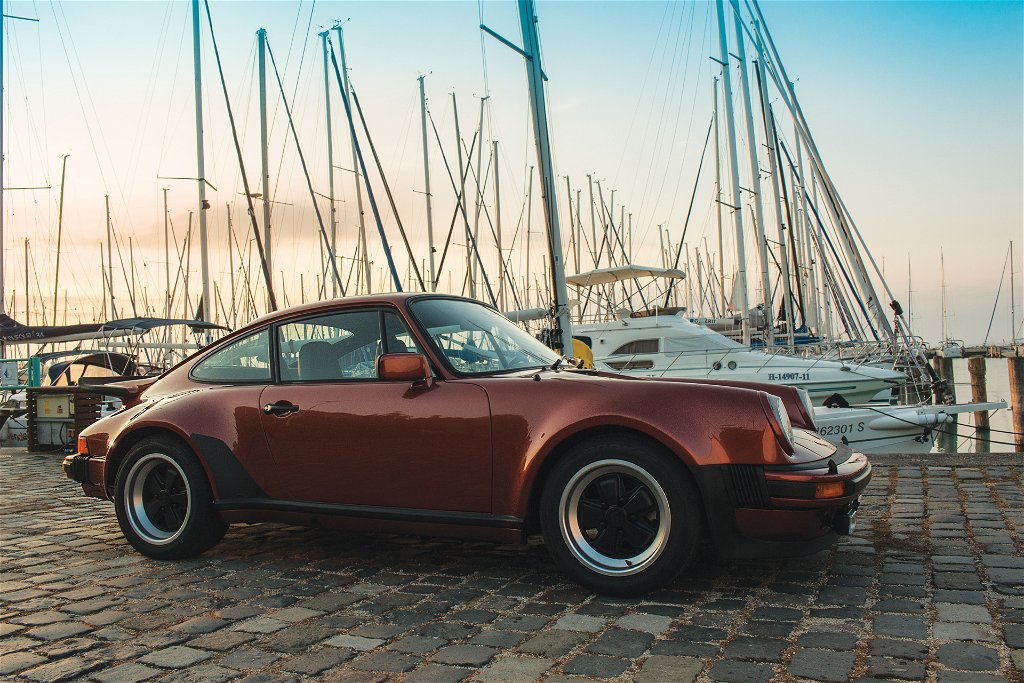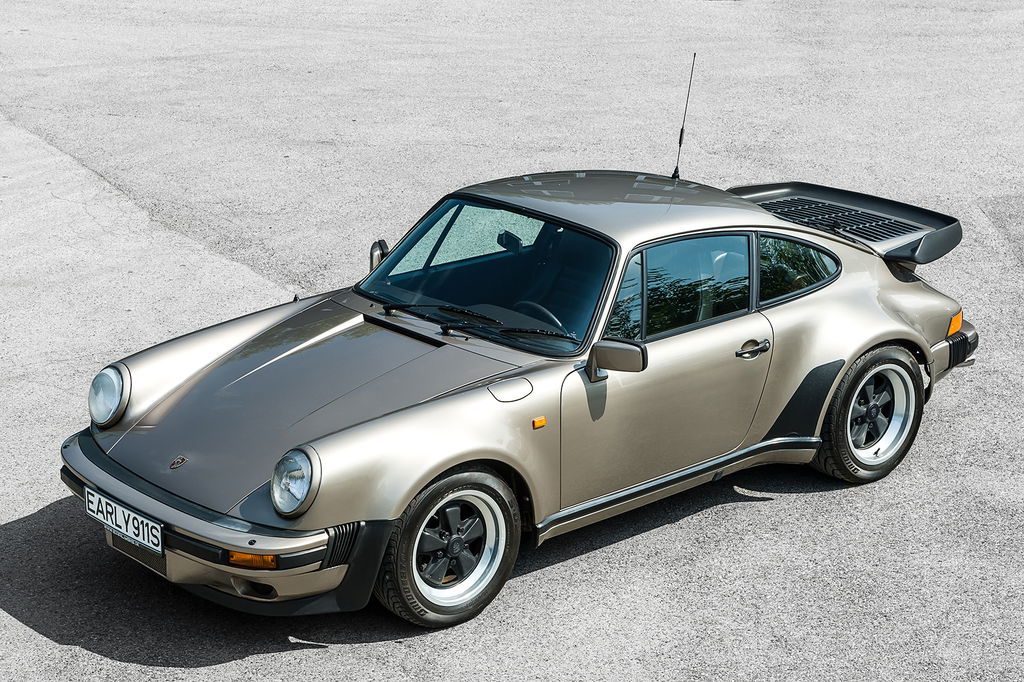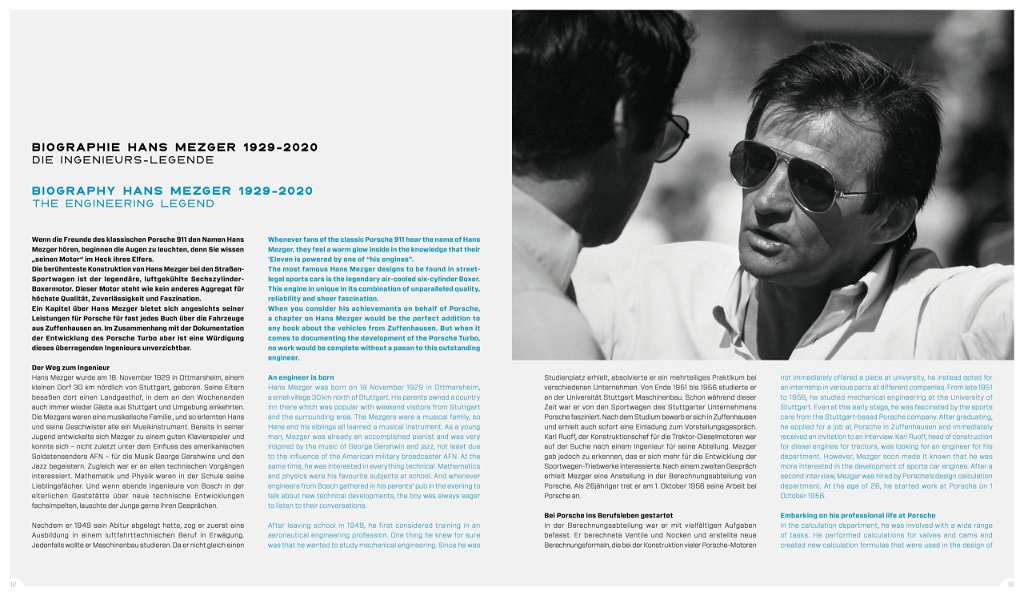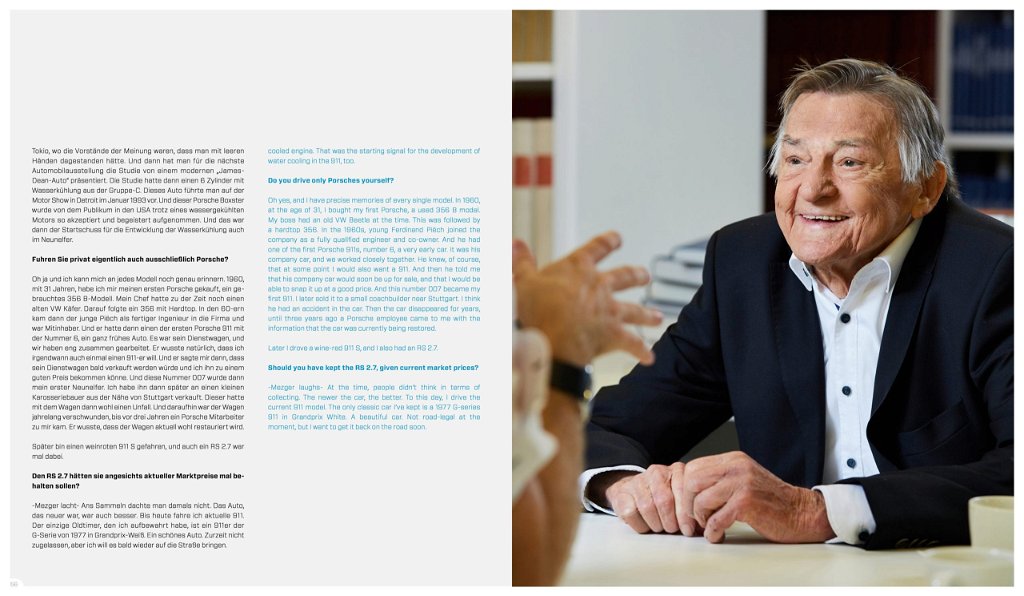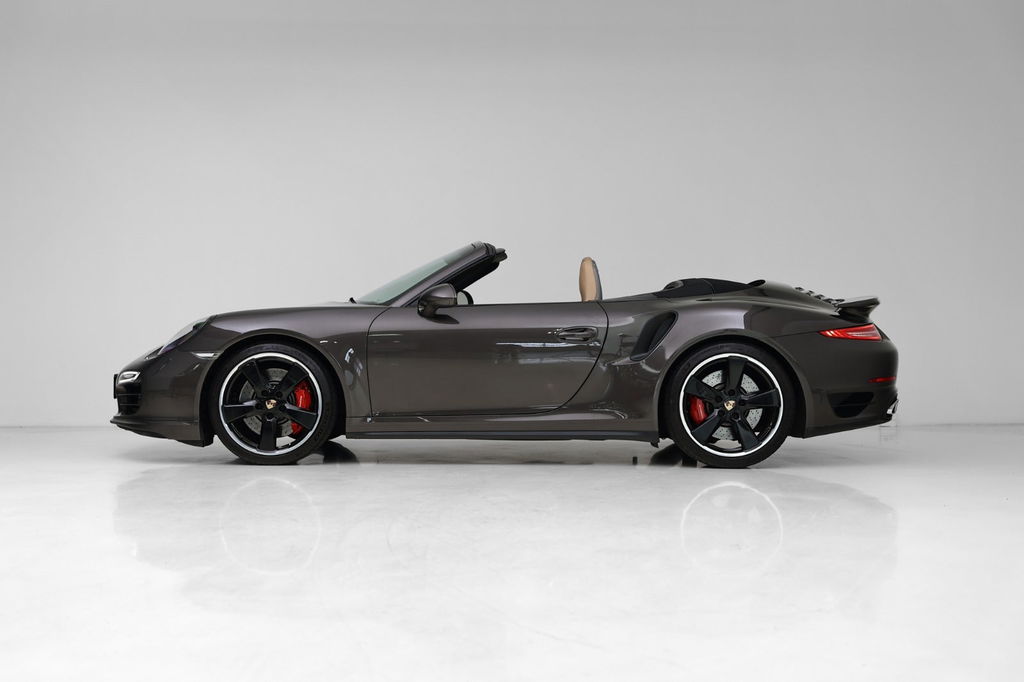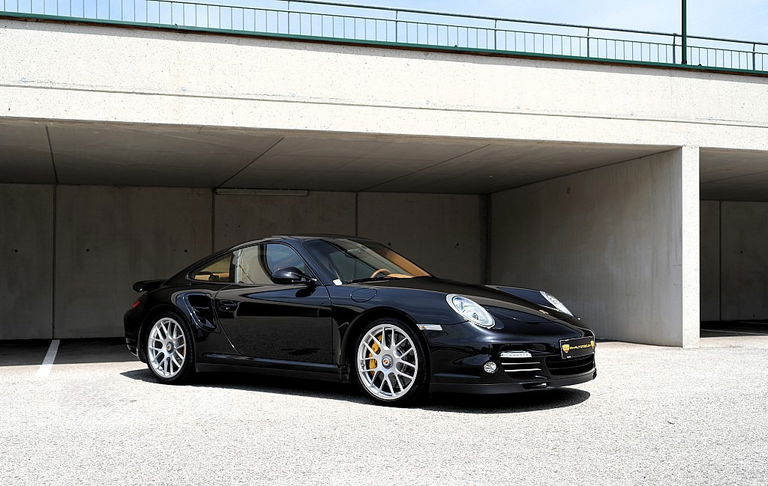Porsche’s evolution to the VGT (variable-geometry turbocharger)
Porsche has now been regarded as a pioneer of turbo technology for decades. With the 930, they launched the first sports car with a gas turbocharger in 1974. In over five decades, Porsche has continued to develop the technology. For their customer cars, they borrowed it from the 917 originally. Porsche’s pioneering work ranged from intercoolers and biturbo charging to the so-called variable-geometry turbocharger (VGT) charger. In 2006, Porsche released the world’s first petrol-powered production car with such a VGT. We take you on a short journey through the evolution of forced induction at Porsche.
For decades, the main disadvantage of turbocharged engines was their drivability
Even when the turbocharged Porsche 917 and the later 935, 956 and 962 were used for racing, drivability was the all-important issue. Drivers of older Porsche 911 Turbo models will be familiar with the problem: little pressure in the low rev range, sudden onset of thrust in the mid-range. In the vernacular, it’s often called “turbo lag”. For decades, this kind of power delivery was the norm for turbocharged cars. But how does turbo lag actually occur? The answer lies in physics.
This refers to the part of the rev range where the turbocharger cannot yet provide maximum boost pressure. With lower revs and engine load, the exhaust gas flows are not yet sufficient to accelerate the turbine in the turbocharger to the target speed. The turbocharger’s compressor then also won’t rotate as fast as is needed. So in total, there is less boost pressure. This means less torque and therefore less power. However, once the maximum boost pressure is reached, the torque quickly skyrockets. The world-famous “kick in the back” is the result. This effect is even more pronounced if a turbine and compressor, colloquially the turbocharger, is used.
Naturally aspirated engines, on the other hand, have a more uniform power and torque curve. That’s why high-revving naturally aspirated engines without turbocharging were mostly used in 20th century racing. They were easier to drive, much more predictable. However, the potentially considerable extra power of turbocharged engines was appealing. Porsche’s engineers therefore sought solutions to enable competitive racing use of turbo technology.


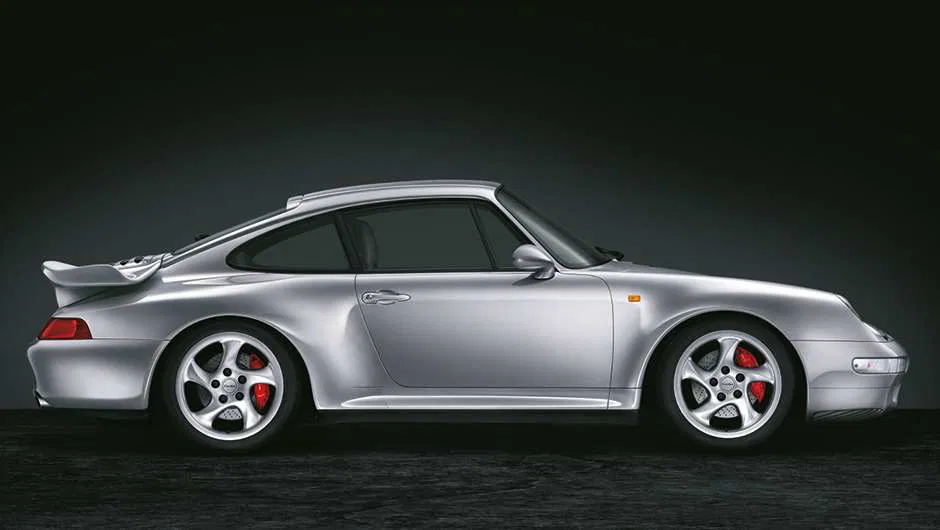
Initially, Porsche used wastegates and adjustable boost controllers
The development department around Hans Mezger at the time was eagerly experimenting to exploit the advantages of turbocharging in racing. The first aids in the early days of turbo engines were wastegates and manually adjustable boost controllers. Wastegates, i.e. bypass valves, can divert parts of the exhaust gas flow past the turbocharger to regulate the boost pressure. The control is automatic, without driver intervention.
„All the tools we used had already existed, they had just been misused and discarded. We rediscovered them – and reinvented them.“
Hans Mezger about the work in taming the turbo-engine
In contrast, the “steam wheel”, the manual boost controller, allowed the driver to regulate the boost pressure independently in the cockpit. By means of a spring mechanism, the wastegate can be made to believe that the boost pressure is either too high or too low. The wastegate then adjusts accordingly. Thus it can significantly increase or reduce the power output depending on the situation. This technology was used as standard in the RUF CTR, for example. With these tricks Porsche achieved the first racing successes with turbocharged engines in the 917/10 and 917/30. The experience was the basis for the first Porsche 911 Turbo’s development, the 930, which was launched in 1974.
This was followed by intercoolers, register charging, biturbo and finally the variable-geometry turbocharger (VGT)
After the first iteration of the Porsche 911 Turbo struck a nerve, the 911 Turbo 3.3 followed for the 1978 model year. Two millimeters more bore increased the displacement from 3.0 to 3.3 liters. Porsche also implanted another racing development in its new spearhead – the intercooler.

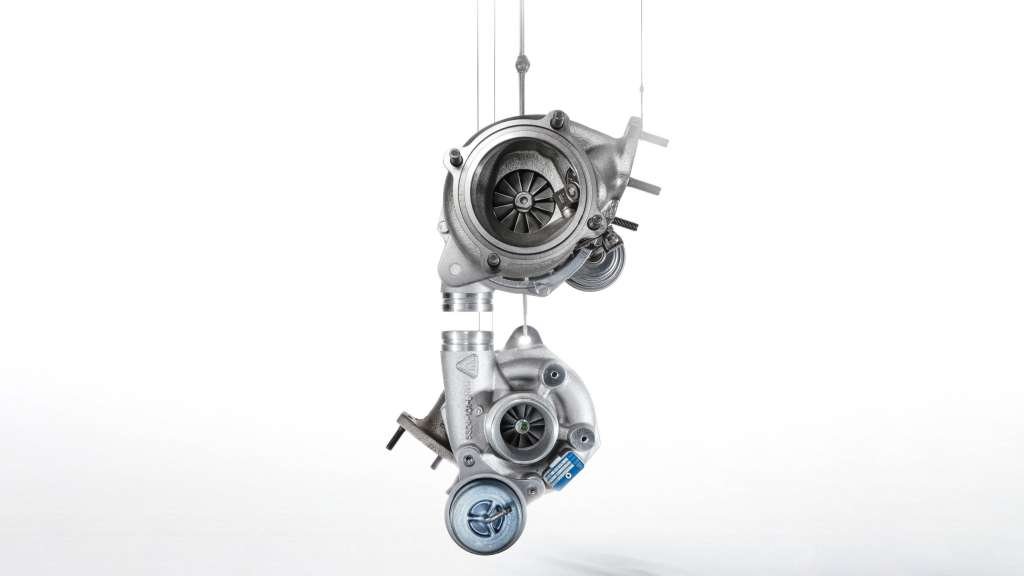
Without altering compression and fuel, intercooling enables higher boost and thus more engine power. Tests with an intercooler showed reduced intake temperatures by 50 – 60 °C. Denser intake air and less required air volumes for the combustion process were the result. A positive side effect was the noticeably decreased combustion temperature. In result, a smaller turbocharger was used, which in turn meant less “turbo lag.” The trials were so successful, that Porsche sold the world’s first production car with an intercooler, the 930 Turbo 3.3, in 1978.
Richard Lindhorst, Elferspot Buyer’s guide Porsche 911 Turbo 3.3
Porsche brought another innovation to mass production with the 959 super sports car. For the first time, a vehicle was equipped with two turbochargers connected in series. This principle is called sequential turbocharging or register turbocharging. A turbocharger with a smaller turbine responds at lower engine speeds, followed by a second turbocharger with a larger turbine that provides boost pressure at higher engine speeds.
With the 993 Turbo, Porsche once again broke new ground and went for biturbo charging
Sequential turbos never found their way into a production 911 though. However, another concept based on two turbochargers did – biturbo charging. The Porsche 993 Turbo was the first to use this technology. One of two equally sized turbochargers is responsible for each cylinder bank. This principle allows the use of two small turbochargers instead of a single bigger turbo, and thus faster response. At the same time, Porsche introduced OBD-II-based exhaust gas diagnostics to further reduce emissions and consumption. The result was impressive – the 993 Turbo had the lowest-emission production powertrain in the world.

Porsche was the first manufacturer to use a variable-geometry turbocharger (VGT) in a petrol engine
Porsche also impressed with a world first at the premiere of the 997 Turbo. At its rear, it had the first petrol powered engine with a VGT. Due to the significantly higher exhaust gas temperature of gasoline engines, this technology had until then been reserved for diesel engines. VGT, or variable-geometry turbos, can alter the wind’s angle of attack to the turbine blades. On the M97/70 engine’s two VGTs, they were adjusted via a linkage. At lower exhaust gas volumes, e.g. in the lower engine speed range with little load, the blades are set steeper. In this way, the turbine’s and subsequently the compessor speed can be controlled as required over the entire rev range.
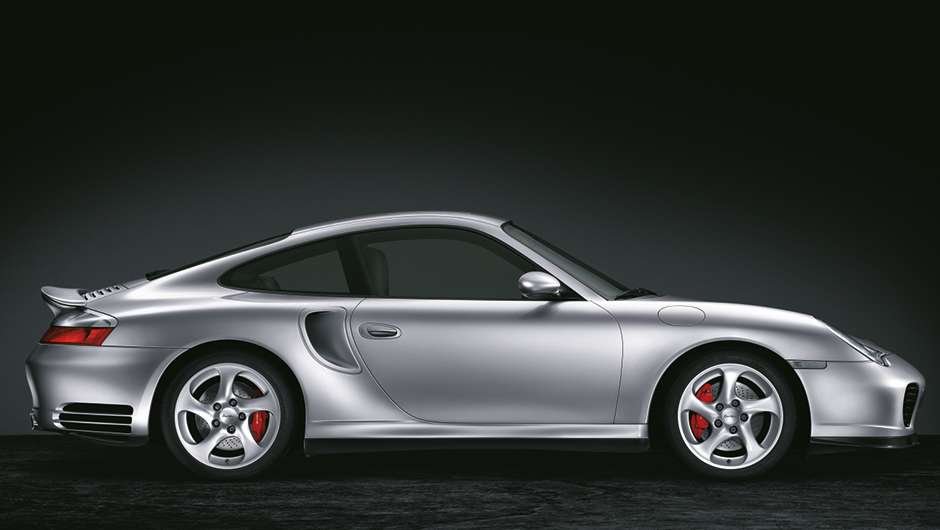

This allows the turbine speed to be kept at a high level even with lower exhaust gas flows, which again ensures faster response. If you reach higher rpm and loads, the angle is set to a less steep angle. With the variable-geometry turbo (VGT), Porsche has almost completely eliminated turbo lag. This manifests itself particularly in the Porsche 991.2 or 992 Carrera (S). The VGT allowed Porsche to provide a very constant torque plateau from 2,000 rpm. As a result, the power curve of the 3.0-liter biturbo engines is almost linear. As a result, the power band is very similar to the atmospheric engines of the predecessor.
Porsche’s turbocharged engines have always been among the most efficient of their time
Turbo engines from Stuttgart Zuffenhausen have always been among the best the world of combustion engines had to offer. The grandees around Mezger and Singer cultivated forced-induction engines for racing in the 1970s. Afterwards, they made them usable in road-legal sports cars. Similar to the 911 concept, Porsche’s engineers spent decades tweaking their turbochargers.
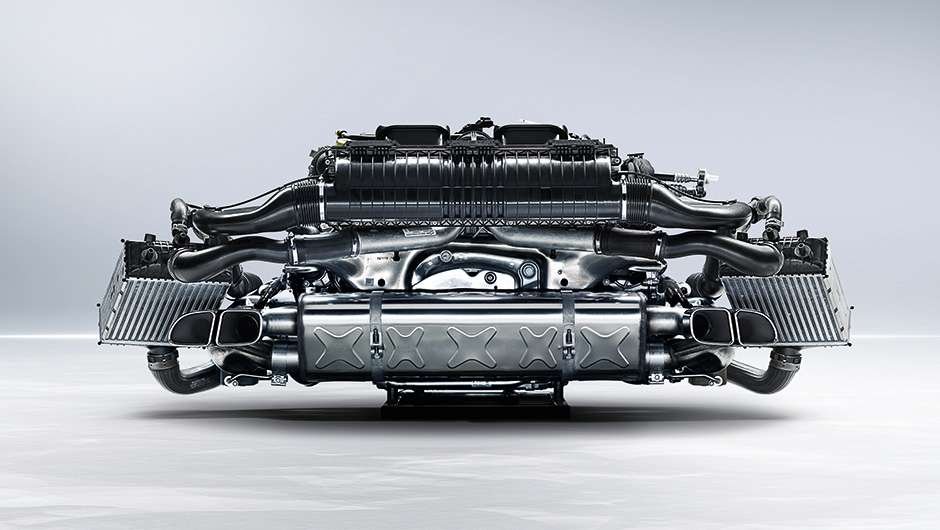

The result was masterpieces of engineering. Turbo lag is now more a relic of the past than an actual problem. Specific power outputs of 150 hp per liter of displacement are now the order of the day. And they do so in compliance with strict emissions regulations and with fuel consumption figures that were unheard of just 30 years ago. With the exception of the 4.0-liter models, such as the Cayman GT4 RS or 992 GT3, turbocharged engines are the measure of all things at Porsche.
The variable-geometry turbo (VGT) could be followed by an electric turbocharger
According to patents filed in early 2022, Porsche is already working on the next innovation for turbocharging. This outlines a turbocharger whose exhaust turbine no longer has a mechanical connection to the compressor. Instead, electricity is generated via the exhaust turbine, which drives a generator that in turn provides the electrical energy for turning the compressor. Either way, Porsche stands for high-revving naturally aspirated and turbocharged engines alike. We can’t wait to see what surprises the engineers in Zuffenhausen have in store before the final demise of the combustion engine.
Elferspot magazine
You have reached your article limit for this month.
Become an Elferspot Member now and get unlimited access to our Elferspot Magazine and other features!
- No obligations or charges.
- We help you find your dream car: get newly added cars straight into your mailbox.
- Your own watch list for your favorite cars.
- Unlimited access to Elferspot Magazin.
- -10% welcome discount for Elferspot textile products
- Successfully sell your Porsche via Elferspot.


